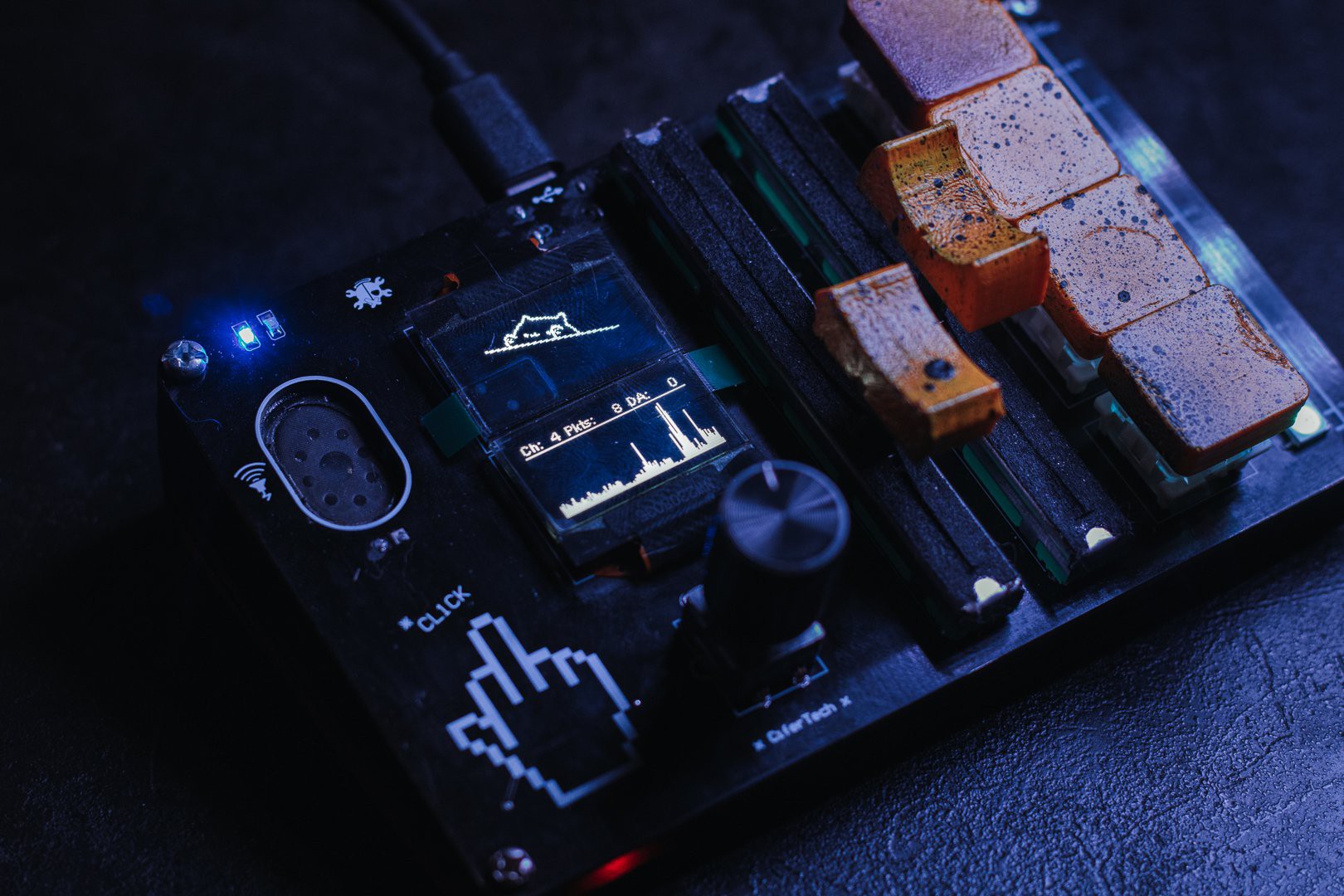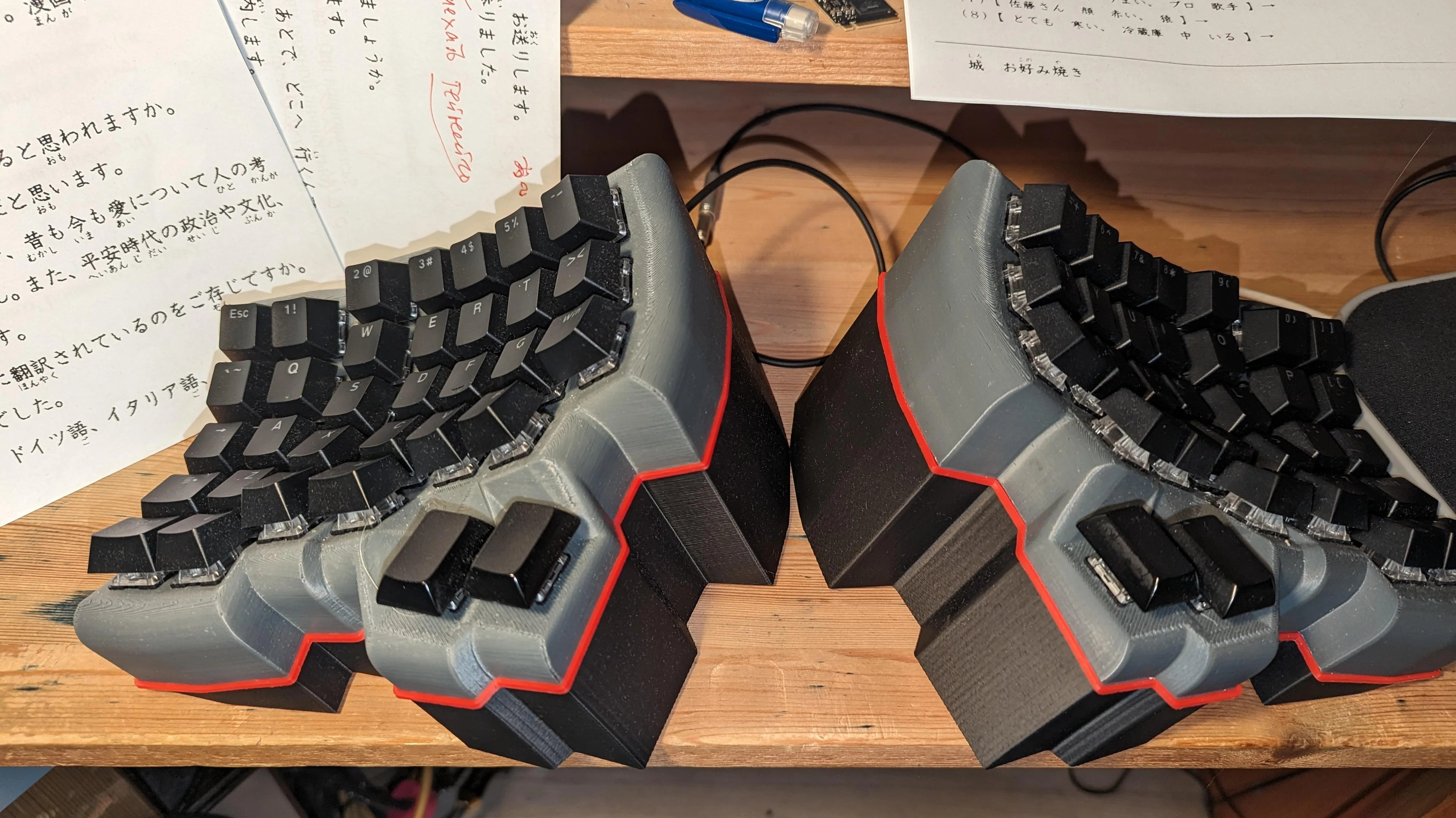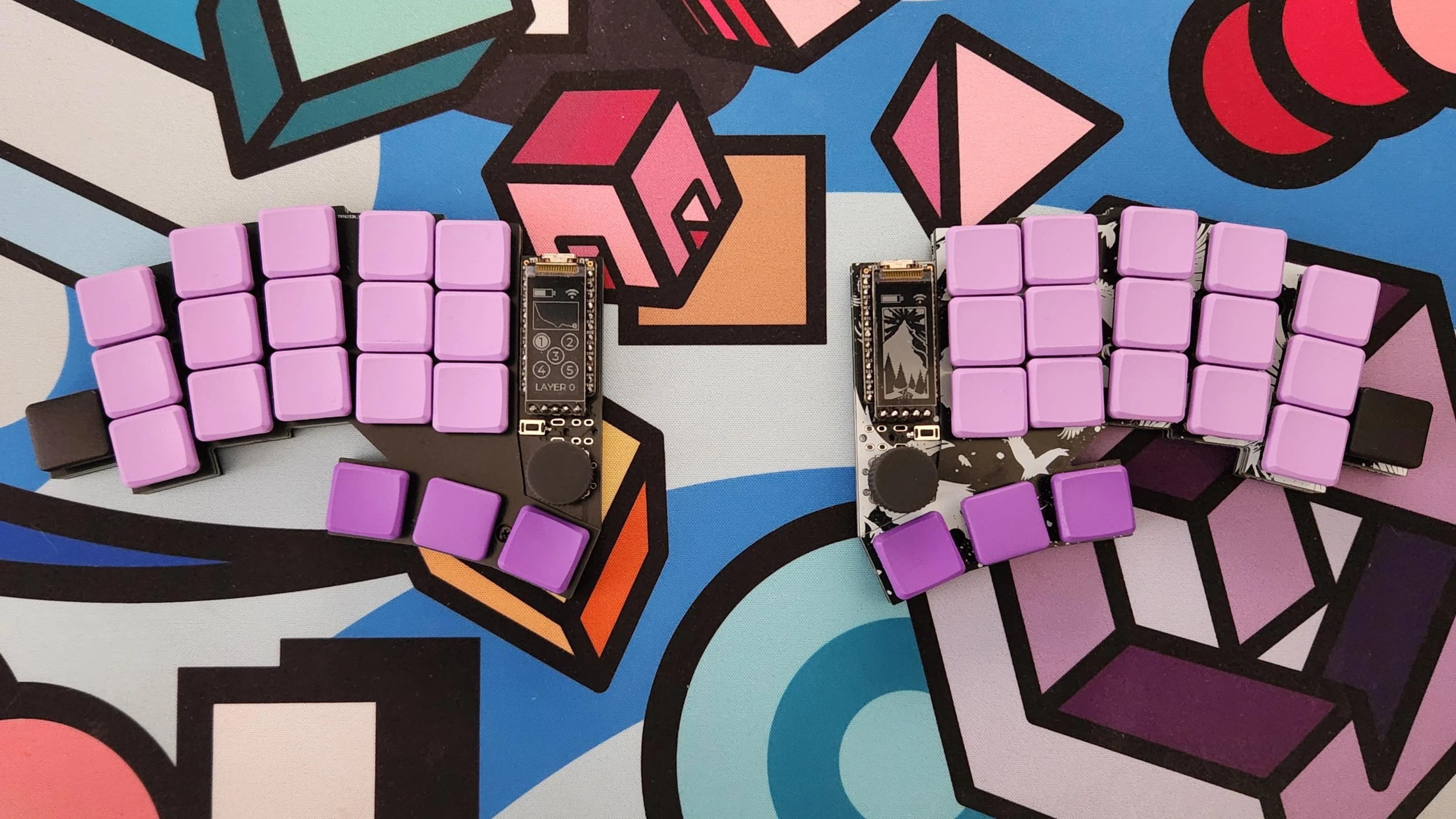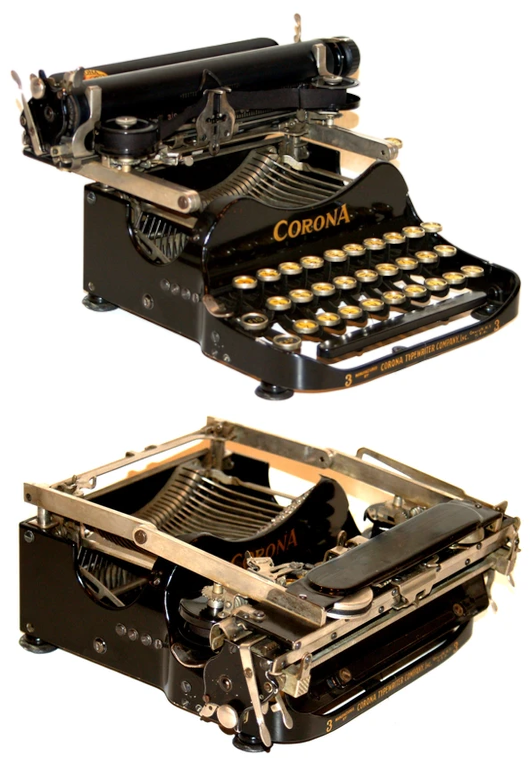Keebin’ with Kristina: the One with the Folding Typewriter [Hackaday]

Have you built yourself a macro pad yet? They’re all sorts of programmable fun, whether you game, stream, or just plain work, and there are tons of ideas out there.

But if you don’t want to re-invent the wheel, [CiferTech]’s MicroClick (or MacroClick — the jury is still out) might be just what you need to get started straight down the keyboard rabbit hole.
This baby runs on an ATmega32U4, which known for its Human Interface Device (HID) capabilities. [CiferTech] went with my own personal favorite, blue switches, but of course, the choice is yours.
There are not one but two linear potentiometers for volume, and these are integrated with WS2812 LEDs to show where you are, loudness-wise. For everything else, there’s an SSD1306 OLED display.
But that’s not all — there’s a secondary microcontroller, an ESP8266-07 module that in the current build serves as a packet monitor. There’s also a rotary encoder for navigating menus and such. Make it yours, and show us!
Presenting the Wedgetyl, and Lessons Learned
Believe it or not, the Wedgetyl is [burbilog]’s first build. If you can’t tell the lineage from the name or the photo, this is a dactyl manuform-like design with super wedgy bases and RP2040s for the brains, and Gateron clear switches.

As this was a first build, there were plenty of lessons learned along the way, and that’s what the bulk of this post is about. While I won’t list all thirteen, here are some of the highlights including the revelation that finding the exact right location for the thumb cluster is the most difficult task of a project like this.
As far as building it goes, the hardest part might be the soldering/wiring, unless you use something like the Amoeba single-switch PCBs which allow for hot swapping. At first, the Wedgetyl had Cherry MX reds, but now it has those Gateron clears.
There are other gems in the post, like all wiring guides on the Internet are crap and TRRS connectors are stupid. While I’d love to see [burbilog] create the ideal wiring guide for at least this keyboard, I totally understand if that’s never going to happen. And apparently they fried some pins on the RP2040 trying to use a TRRS. There are a ton of options out there, and it seems [burbilog] already found one in the form of the 4-pin M8 connector. Great build, [burbilog], and I can’t wait to see your second one.
The Centerfold: Crowkb, Minus a Few Keys

This lovely little lavender number is the crowkb_38, which is a few keys removed from [CrackerRobot]’s original 46-key crowkb. That slammin’ desk mat is from One of Zero, and the key caps are MBKs. See those pinky keys on the sides there? [CrackerRobot] has them set up as Esc and Enter. What would you use them for?
Do you rock a sweet set of peripherals on a screamin’ desk pad? Send me a picture along with your handle and all the gory details, and you could be featured here!
Historical Clackers: the Corona 3 Folding Typewriter

While folding keyboards are quite cool, they are really nothing new. (Are you surprised?) If you were a soldier or a journalist during WWI, or happened to be named Hemingway, chances are good that you would have used a Corona 3 folding typewriter. Huff Post called it the first laptop.
Few typewriters ever reach icon status, and the Corona 3 is one of them. This extremely popular typewriter was made between 1912 and 1941. The platen and carriage fold down over the keyboard, which makes it compact and more portable.
Each of the 28 regular keys has three characters on the type bar, so between lower case, upper case, and all the third functions, you have quite a full keyboard thanks to the layers you get with FIG and CAP. You can see some rather nice pictures here.
The Corona 3 was so successful that the Standard Typewriter company changed its name to the Corona Typewriting Company in 1914. The company merged with L.C. Smith & Brothers Typewriting to become Smith-Corona, and eventually Smith Corona Marchant (SCM) in 1958. After a couple of bankruptcies, the company settled on selling thermal paper.
ICYMI: Keyboard for Ants Gets RGB

Aughhhh, it’s so tiny! You know I can’t resist things that are either way smaller or way larger than life, and my only regret is that I didn’t see this tiny backlit keyboard before [Lewin] did. Hey, at least I can write about it here.
This actually isn’t [juskim]’s first tiny keyboard, but as you’ll see in the video, it’s much smaller than the previous attempt. Even though it’s tiny, this 60% design is really inclusive, sporting a number row, a function row, and even +/-/= and square brackets.
You can see that it’s small, but if you want to make a maquette to really fathom the size of this thing, it measures 66 mm x 21 mm. Smaller than a Blackberry keyboard. And yes, you can actually type on it, because it’s a real, working keyboard with an ATmega32U4 brain and tiny 3D printed key caps. [juskim] managed to bang out 14 words per minute on it, which is pretty good considering the size.
Got a hot tip that has like, anything to do with keyboards? Help me out by sending in a link or two. Don’t want all the Hackaday scribes to see it? Feel free to email me directly.

![keebin’-with-kristina:-the-one-with-the-folding-typewriter-[hackaday]](https://i0.wp.com/upmytech.com/wp-content/uploads/2024/08/207600-keebin-with-kristina-the-one-with-the-folding-typewriter-hackaday-scaled.jpg?resize=800%2C445&ssl=1)